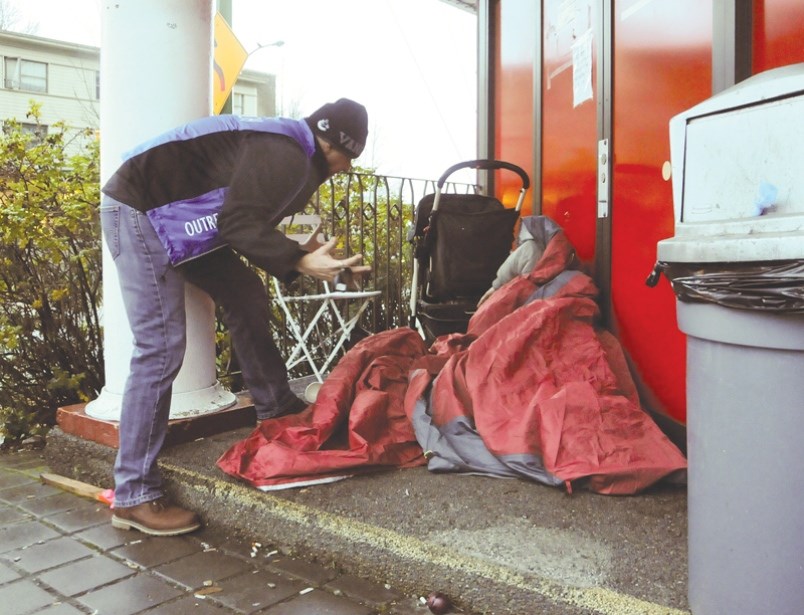The federal government’s new national housing strategy is getting mixed reviews from planners, experts and advocates on the North Shore.
Jean-Yves Duclos, minister of families, children and social development, debuted the government’s long-awaited national housing strategy Wednesday, bringing with it billions in spending aimed at helping Canada’s 1.7 million residents living in “core housing need.”
Among the baskets of funding announced in the plan: the $4-billion Canada Housing Benefit, an average annual rent subsidy of $2,500 for eligible households; $15.9 billion to build 60,000 new affordable housing units and refurbish 240,000 existing ones and $2.2 billion aimed at reducing chronic homelessness by 50 per cent.
The government is hoping to prioritize projects close to transit and ones that assist the most vulnerable populations including seniors, Indigenous people, survivors of family violence, people with disabilities, refugees, veterans, and those grappling with homelessness.
The announcement was welcomed by North Shore Community Resources’ community housing action committee, but chairman Don Peters said the strategy is still vague and too slow given how much time the Liberals have had.
“CHAC is very pleased that, at long last, the feds are getting around to the housing crisis, particularly after abandoning it in the early ’90s. But at the same time I am very concerned about the apparent lack of urgency in the whole thing,” he said.
Money for some of the programs, like the housing benefit, won’t start flowing for several years, and in many cases, it is contingent on matching provincial funds, Peters noted.
Instead of growing the federal bureaucracy, Peters said the money would be put to better use in the hands of municipalities, which are on the front lines of the affordability crisis.
“They’re the ones who are struggling with limited tools,” he said. “They’re the ones who listen year after year after year to requests from social agencies for assistance. … We do know that it gets worse every year. There are more and more people at the food banks. There are more and more people needing shelter.”
District of North Vancouver planning staff say they are well positioned to take advantage of the new funding coming down the line because the district has land to leverage for new affordable housing projects. The district has a stated goal of creating 600 to 1,000 below-market units over the next 10 years.
Council has already earmarked two of its properties for roughly 80 units each, including the Delbrook lands and seven lots on Oxford Street just west of Phibbs Exchange. District staff are also working right now to find a location for a shelter for families who are homeless, and modular housing, said Dan Milburn, general manager of planning.
And Milburn added, there is also great potential that the federal funds could be applied to building roughly 500 new units of affordable housing on district-owned land in the Maplewood area, which is set for massive change pending adoption of the Maplewood Village Centre plan.
“I think we’re going to be achieving our goals that we set for ourselves in terms of the number of units that we want to see in 10 years,” Milburn said. “What’s really needed next is delivering on those sites and so getting the dollars for capital investment … is the key thing we’re looking for the province and the federal government to come to the table on.”
The City of North Vancouver has considerably less land to offer up, said planning director Michael Epp, but there are some opportunities on the horizon, including expanding a co-op housing complex on the 700 block of West 16th Street and including subsidized units in the redevelopment of the Harry Jerome recreation centre.
Though not directly under the city’s purview, Epp said he was pleased to see the feds pledging to not abandon existing affordable housing providers whose funding agreements are coming to an end.
“Some of them are in rough shape and need substantial reinvestment in order to keep them on the market,” he said. “The city has quite a bit of that type of housing with the expiring operating agreements.”
Penny Gurstein, professor in UBC’s school of community and regional planning, said the plan responds to the most vulnerable populations.
“I’m fairly positive. I do think that it demonstrates that the federal government recognizes that there is an issue across Canada,” she said.
Gurstein said she was heartened to see that the plan targets 25 per cent of its funding specifically for women and children.
Noticeably absent from the strategy, however, Gurstein noted, was any measure to create new market rental housing, or control the flow of foreign capital, which is impacting Vancouver’s housing market particularly.
“That’s something maybe they’ll be doing, hopefully, in some other way,” she said.



